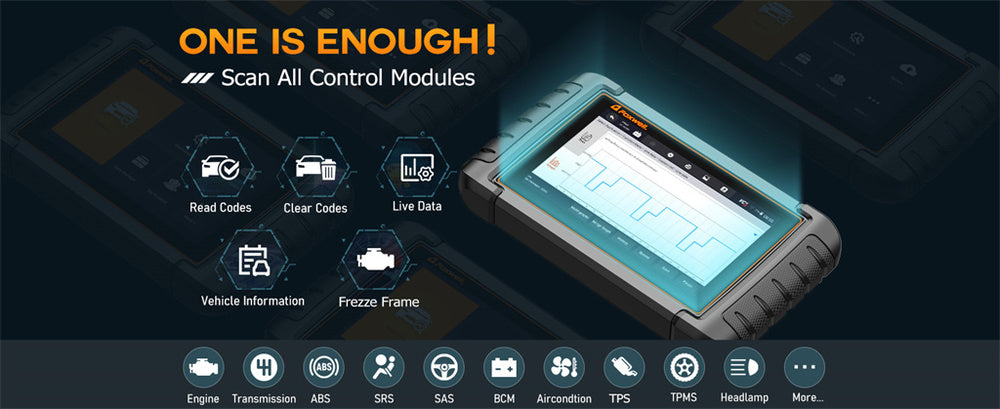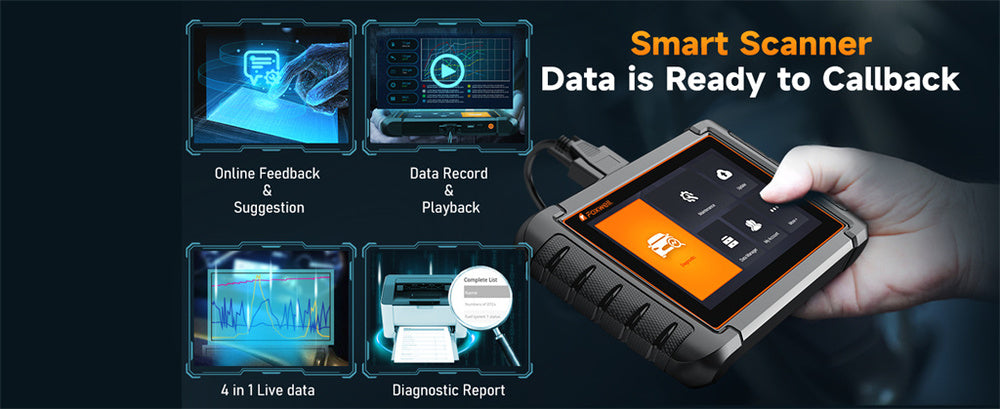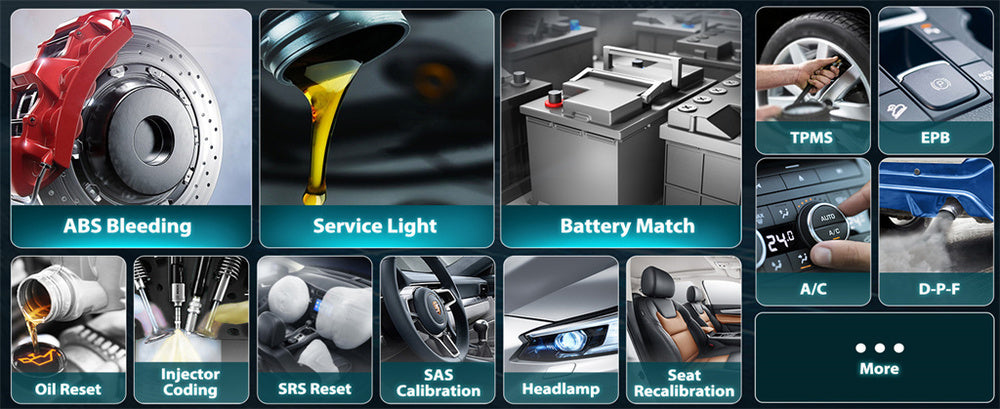OBD2 scanners have become essential tools for vehicle diagnostics, offering real-time data from various systems and sensors that help identify potential issues before they become serious problems.
One of the most powerful features of modern OBD2 scanners is the ability to access live data. But what exactly is live data, and how can it be effectively used to diagnose and maintain your vehicle?
Here, we’ll break down the key types of live data, how to interpret them, and how they can be used to address common vehicle issues.
What is Live Data on an OBD2 Scanner?
Live data on an OBD2 scanner provides real-time information from various sensors and systems within your vehicle while it's operating.
It’s like having a health monitor for your car, continuously showing key metrics like engine RPM, oxygen sensor readings, and fuel trim values.
This feature allows you to assess your vehicle’s condition beyond just error codes, enabling earlier detection of potential problems.
Live data is critical for both diagnosing issues and optimizing performance, as it offers a clear view of how different systems in your vehicle are functioning in real time. However, the data displayed will vary depending on the vehicle's model and the sophistication of the OBD2 scanner.
Common Types of Live Data and What They Mean

Your OBD2 scanner will present a range of live data points, each offering valuable insights into how your vehicle is performing. Here are some of the most common types of live data and what they mean:
Engine RPM (Revolutions Per Minute)
Engine RPM indicates how fast your engine is running. High RPMs at idle could indicate an issue with the idle control system or a vacuum leak.
Fuel Trim (Short-Term and Long-Term)
Fuel trim data reflects the adjustments made to your engine’s air-fuel mixture. Positive fuel trim values suggest a lean condition, while negative values indicate a rich mixture. Persistent abnormalities may point to issues like air leaks or faulty fuel injectors.
Oxygen Sensor Readings
Oxygen sensors monitor the amount of oxygen in the exhaust. If readings are erratic, it could indicate a fuel mixture problem or a failing catalytic converter.
Coolant Temperature
The coolant temperature should generally remain between 190°F and 220°F (88°C to 104°C). Higher temperatures may indicate a cooling system problem, such as a failing thermostat or radiator issues.
Mass Air Flow (MAF) Sensor
The MAF sensor measures the amount of air entering the engine. A faulty reading can indicate a dirty or malfunctioning sensor, which can lead to performance issues or poor fuel efficiency.
Throttle Position Sensor (TPS)
The TPS shows how far the throttle is open, which controls the air entering the engine. If the data is erratic, you may experience issues like poor acceleration or stalling.
Battery Voltage
A healthy battery should show around 12.6V when the engine is off and 13.7V to 14.7V when running. Low voltage can indicate alternator or battery problems, while high voltage might point to a faulty voltage regulator.
Ignition Timing
Ignition timing data shows when the spark plugs fire relative to the position of the piston. Incorrect timing can lead to performance problems such as knocking or pinging.
Understanding these data points can help you monitor your car’s health, allowing you to catch issues before they escalate into serious problems.
How to Read and Interpret Live Data Effectively
Interpreting live data from your OBD2 scanner starts with understanding the normal range of values for your vehicle. Compare the data your scanner shows with baseline values from your vehicle’s manual or reliable online sources.
It’s important to focus on patterns rather than isolated readings. For example, if your coolant temperature spikes only while idling, it could signal a cooling fan issue. Similarly, if fuel trim values are consistently high, it might indicate an air intake problem or fuel system issue.
Use freeze frame data whenever possible. This feature captures sensor readings when a trouble code is triggered, giving you a detailed snapshot of your vehicle’s state at the moment of failure, which is especially helpful for diagnosing intermittent problems.

Using Live Data to Diagnose Common Vehicle Issues
Live data can be instrumental in diagnosing many common vehicle issues, often providing more context than a simple error code. Here are a few examples:
Check Engine Light: When the check engine light comes on, live data can help verify the issue. For instance, a DTC might indicate an oxygen sensor issue, but live data can confirm if the sensor is malfunctioning or if it’s a related issue, such as a fuel mixture imbalance.
Intermittent Performance Problems: If your car is misfiring or hesitating intermittently, live data can help track the problem. Monitoring fuel trim, ignition timing, and sensor readings during driving conditions can pinpoint what’s triggering the issue.
Fuel Efficiency Drops: If you notice a drop in fuel economy, check data points like the MAF sensor and throttle position. Abnormal readings could indicate an air intake or fuel delivery problem.
Overheating: Monitoring coolant and transmission fluid temperatures can help identify cooling system issues before they cause engine damage. If your coolant temperature spikes unexpectedly, it might be a sign of a failing radiator fan or water pump.
Using live data for diagnostics allows for a more targeted approach to problem-solving, reducing guesswork and helping you address issues more efficiently.
Conclusion
Understanding live data from your OBD2 scanner gives you the upper hand in maintaining your vehicle's health.
By knowing what the key data points mean, you can quickly diagnose issues and even prevent future problems.
Whether it’s analyzing fuel trim to improve efficiency or monitoring coolant temperature to avoid overheating, live data is a powerful tool for both everyday drivers and car enthusiasts.
Mastering its use not only saves time and money on repairs but also ensures your vehicle operates at its best.
FAQs
Why would you view freeze frame data?
Freeze frame data provides a snapshot of the vehicle's sensor readings and conditions at the exact moment a diagnostic trouble code (DTC) was triggered. This helps pinpoint what was happening when the issue occurred, making it easier to diagnose intermittent or complex problems.
Which operating mode of the OBD-II system shows current data?
Operating mode 1 of the OBD-II system displays current live data from sensors, allowing users to monitor real-time vehicle performance.
What type of codes are stored in a freeze frame?
Freeze frame data is typically stored when emissions-related diagnostic trouble codes (DTCs), such as P-codes (powertrain), are triggered. These codes are related to engine performance, emissions, and other critical systems.




Leave a comment
This site is protected by hCaptcha and the hCaptcha Privacy Policy and Terms of Service apply.